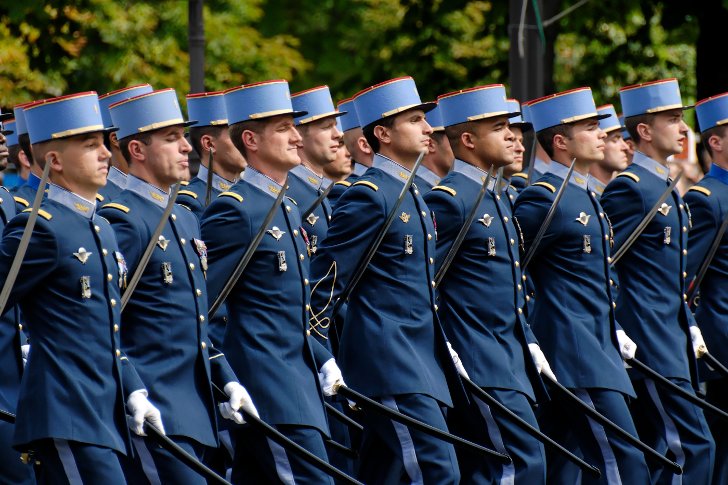The Bastille was a medieval fortress in Paris that served as an armory and a political prison and represented royal authority. On July 14, 1789 the people of Paris stormed the Bastille. Although the prison contained only seven inmates at the time, its fall was the turning point of the French revolution because the fortress symbolized abuses by the monarchy.
Following the French Revolution, the anniversary of the storming was celebrated as the Fête de la Fédération. It was discontinued during the Napoleonic Era and revived following the establishment of the Third Republic. Bastille Day in its present form was officially instituted as the French National Day in 1880. The traditional parade has been held almost every year since.
The Bastille Day military parade is Europe’s oldest and largest regular military parade. It passes down the Avenue des Champs-Élysées from the Arc de Triomphe to the Place de la Concorde where the President of France, his government and foreign ambassadors to France stand. It is broadcast live on French TV.
The parade features around 7,000 soldiers, 300 vehicles, 240 horses and over 80 aircraft. It includes an infantry parade, a mounted column, a mobile column, and an aerial flypast column. Sometimes detachments of foreign troupes participate in the parade as guests.
The Bastille Day parade always opens with cadets from the country’s leading military schools such as the École Polytechnique, the École spéciale militaire de Saint-Cyr, and École Navale. It ends with a spectacular parachute display involving selected paratroopers from the French Air Forces.

Photo © Marie-Lan Nguyen / Wikimedia Commons / CC-BY 2.5




